Editor: 邵丹蕾 Author: Wushao Lin Time: 2019-06-27 Number of visits :178
The 18th Electromagnetic and Light Scattering conference (ELS-XVIII) was held at the Zijingang Campus of Zhejiang University from June 10 to June 14, 2019. The conference was hosted by the School of Earth Sciences of Zhejiang University and co-hosted by the National Aeronautics and Space Administration (NASA) and Elsevier. The conference was chaired by Dr. Lei Bi from the School of Earth Sciences of Zhejiang University, Dr. Michael Mishchenko from the NASA Goddard Institute of Space Science, Prof. Ping Yang from Texas A&M University, and Prof. Jun Wang from the University of Iowa. Over 130 scholars and students from 17 countries (i.e., China, USA, Russia, Germany, France, Switzerland, Sweden, Finland, Spain, Japan, Korea, Australia, New Zealand, Latvia, Ukraine, Belarus, and Mexico) participated in this conference.

Qunke Xia, Michael Mishchenko and Lei Bi
On the opening ceremony on June 10, Prof. Qunke Xia, Dean of the School of Earth Sciences of Zhejiang University, extended a warm welcome to all of the attendees. He said that it was the first time that the ELS conference held in Asia and it was a great honor for Zhejiang University to host the conference. The conference has provided a congenial atmosphere for in-depth discussions as well as a learning platform for young scientists and students to experience the frontiers of relevant areas of research. Dr. Michael Mishchenko gave a review and overview of the ELS conference and wished this conference great success. Dr. Lei Bi gave a brief introduction of the conference agenda and announced the commencement of the conference.
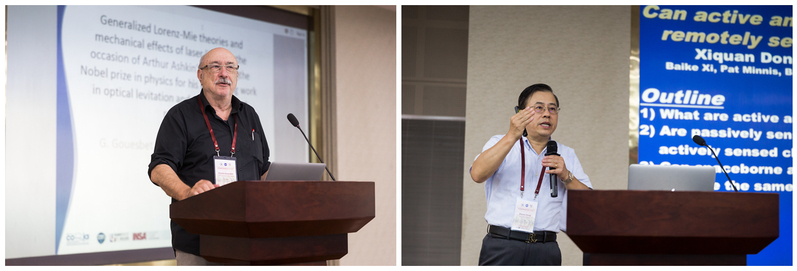
Gérard Gouesbet and Xiquan Dong
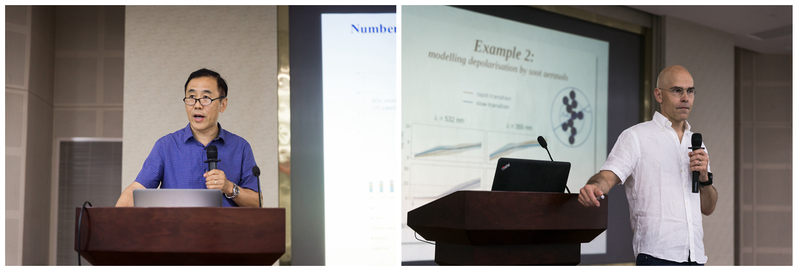
Fuzhong Weng and Michael Kahnert
During the conference, Prof. Gérard Gouesbet from the University of Rouen, Prof. Xiquan Dong from the University of Arizona, Prof. Hiroshi Ishimoto from the Japan Meteorological Agency, Prof. Michael Kahnert from the Swedish Meteorological and Hydrological Institute, Prof. Seiji Kato from the NASA Langley Research Center, Prof. Olga Muñoz from the Institute of Astrophysics Andalusia, Prof. Timo A. Nieminen from the University of Queensland, Prof. Vladislav V. Yakovlev from Texas A&M University, Prof. Fuzhong Weng from the Chinese Academy of Meteorological Sciences, and Prof. Peng-Wang Zhai from the University of Maryland Baltimore County contributed 11 impressive invited talks to the conference. The topics of these talks included research on the basic theory of electromagnetic and light scattering, the theory and model developments of atmospheric radiative transfer, satellite remote sensing of clouds and aerosols, and laboratory measurements of light scattering by non-spherical particles.
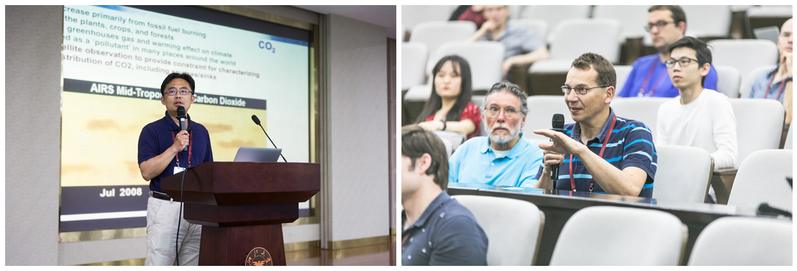
Jun Wang from University of Iowa and Karri Mouinonen from University of Helsinki
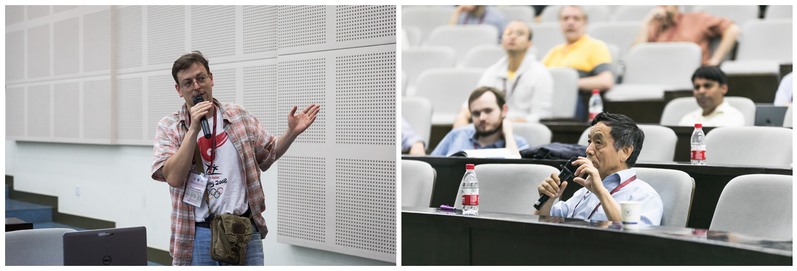
Sergey Korkin from NASA Goddard Institute of Space Science and Kuan Fang Ren from University of Rouen
Prof. Gérard Gouesbet offered a review and overview of the research devoted to the generalized Lorenz-Mie theory and mechanical effects of laser light as a celebration of Arthur Ashkin’s pioneering work in optical levitation and manipulation. Prof. Seiji Kato summarized the method to compute surface and in-atmosphere irradiances and described how those irradiance estimates contribute to our understanding of the energy budget of the Earth and energy transport and hydrological cycles within the system. Prof. Fuzhong Weng introduced a new generation of fast and accurate radiative transfer models in China, e.g., the advanced radiative transfer modeling system (ARMS). He reviewed the capabilities of the fast radiative transfer models developed in the numerical weather prediction community, summarized the full requirements of fast radiative transfer models for current and future satellite data assimilation, and proposed new techniques for superfast computations of atmospheric and surface radiative transfer processes.
Besides the invited talks, 85 contributed talks and 37 posters were presented from June 10 to June 14 that described research on electromagnetic theory, multi-scattering, radiative transfer, atmospheric and oceanic remote sensing, atmospheric radiation, and light scattering methods to technological applications. Scholars from different countries had deep discussions on these topics, which could provide new perspectives, new thoughts, and new methods for research in the disciplines of electromagnetic scattering, radiative transfer, and satellite remote sensing.
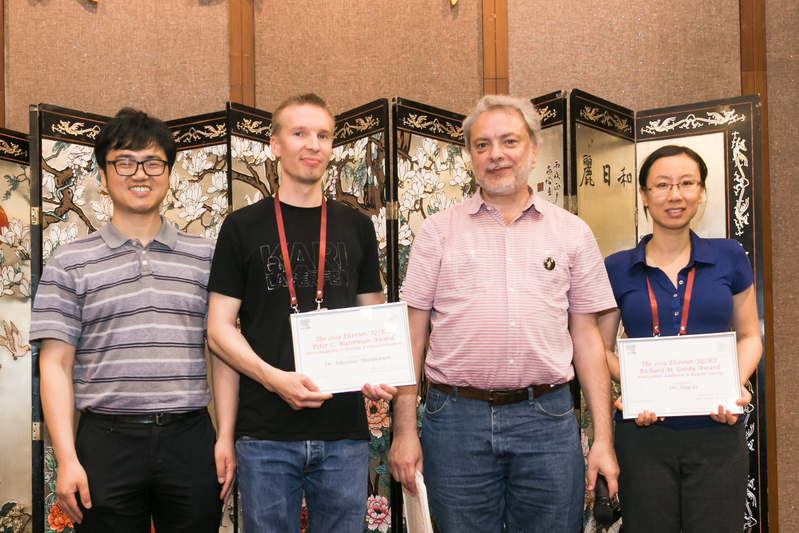
Lei Bi、Johaes Markkanen、Michael Mishchenko、Jing Li
At the award ceremony on the 12th June, Dr. Michael Mishchenko, chief editor of the Journal of Quantitative Spectroscopy & Radiative Transfer (JQSRT), announced the winners of the 2019 Elsevier/JQSRT young scientist awards. The “Peter C. Waterman Award” was presented to Dr. Johannes Markkanen from the Max Planck Institute for Solar System Research and the “Richard M. Goody Award” was presented to Dr. Jing Li from Peking University. These two awards are presented to early-career scientists in the category of electromagnetic scattering and the category of atmospheric radiation and remote sensing, respectively.
This conference promoted the exchange of the latest research progress in the fields of electromagnetic scattering, radiative transfer, and remote sensing. It provided scholars from different countries with a good platform for cooperation and exchange between different disciplines and research fields and also provided new ideas and perspectives for future research.
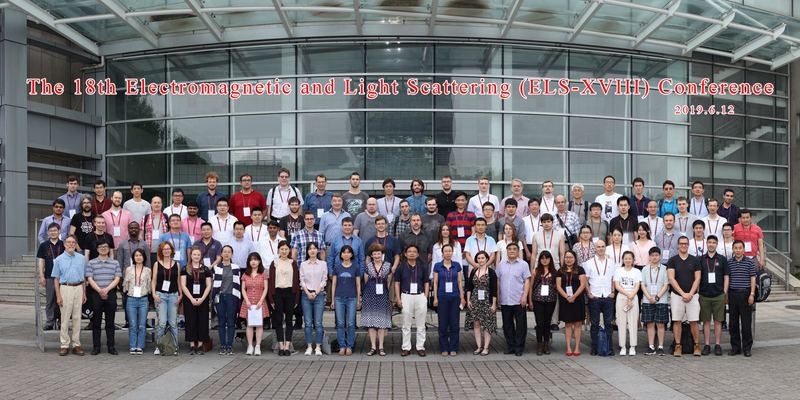
The ELS-XVIII conference built on the remarkable successes of the previous ELS conferences held in Amsterdam, Helsinki (twice), New York, Vigo, Halifax, Gainesville, Bremen, Salobreña, St. Petersburg, Bodrum, Hatfield, Taormina, Lille, Leipzig, College Park, and College Station. The ELS-XVIII conference was the first ELS conference to be held in Hangzhou, China. The main objective of the ELS conference is to bring together scientists and engineers studying various aspects of light scattering and to provide a relaxed academic atmosphere for in-depth discussions of theoretical advances, measurements, and applications.
